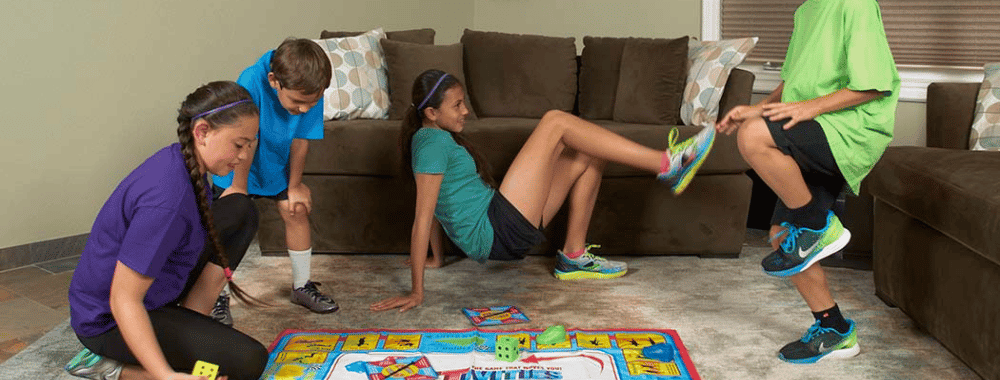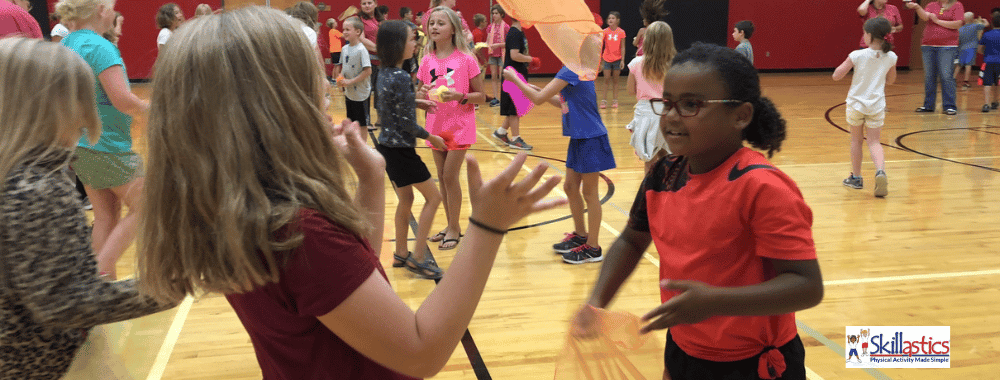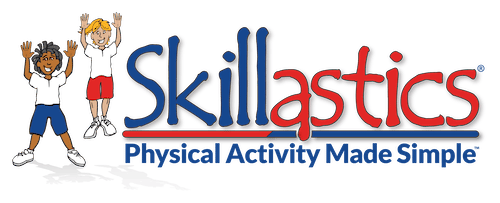So you want to start an afterschool program. Whether it’s your lifelong dream to provide a safe space for kids to gather after school, or you’ve been voluntold by your district that you’re now the head of a newly-developed afterschool program, starting it up from scratch can be a daunting task. Add in a shoestring budget, and your task can seem even more impossible! But don’t worry, with a few purposeful strategies, even the skinniest financial budget can launch a successful afterschool program that kids will love.

Step 1: Define your vision
Think about what your goals are for not just the space, but your program as a whole. An afterschool program is so much more than just putting 100 kids in a space with four walls where they can “work out the wiggles.” Your vision doesn’t have to be complicated to start. It can be as simple as “I will provide a safe, fun space where kids from ages 5 to 15 can extend their school day by up to two hours with activities, exercise, and social interaction.” Once you have your basic vision, you can elaborate with a business plan to define what you want to do, how you want it to look and feel, and what you need to get it going. Especially for standalone programs outside of a school district, a business plan is required for licensing, banking, and other legal setup steps. Basic factors to consider can be:
- Your location/space. Where will your program be located? Will you have separate spaces by age?
- Capacity: How many children can you accommodate?
- Curriculum: What will you offer that sets your program apart from another afterschool program? Your curriculum should provide enrichment opportunities, social interaction, and academic opportunities. (Bonus points for being fun!)
- Staffing: You’ll need to ensure your staff is both qualified and has the desire to work with kids. You will want to check with your local state requirements for licensing regulations, any regulations on who can work with children in an afterschool environment, and understand student-to-teacher ratios to make sure you’re in compliance.
- Resources: What will you offer kids to enhance the environment? This can be anything from an inventory of hula hoops and soccer balls, to enrichment opportunity materials, to PPE but you’ll want to ensure you consider what you’ll need to get up and running.
- Safety: Keeping kids safe in afterschool programs is a critical component, and it involves more than just safety within the four walls. You must also consider safety solutions for ensuring kids stay in your designated location and can’t leave without permission or director/teacher awareness. It also includes security measures like verifying who can check kids out or pick them up and how you can ensure those individuals have permission to do so, as well as keeping kids out of restricted areas.

Step 2: Create your budget
Your biggest hurdle was back step 1, defining what you need to get up and running. This next part is easy – creating your budget to identify your one-time start up (curriculum purchases, licensing fees) and renewable costs (monthly or weekly staffing, advertising), plus maintenance costs (consumables like bath tissue, art supplies, or snacks). Identifying your program expenses and existing financial resources will also help you see where you have gaps in your financial funding.

Step 3: Take stock of what you have
For each of the factors in your vision, take stock of what you already have, so you know what else you’ll need. For instance, if you get to use the gym from 3-5:00 pm, but you have to share it with the basketball team twice a week for an hour, you’ll need to develop the curriculum around the schedule and space that you have.
If an in-school afterschool program, identify any starting budget, location, and staffing resources that may be provided from the district.
If a standalone afterschool program, you’re probably less likely to have an arsenal of resources you can share with the school but don’t let that discourage you. If you know what you need from steps 1 and 2, whatever you don’t have readily available becomes a budgetary need in the next step.

Step 4: Evaluate what you still need
If you’re starting off with that shoestring budget, it’ll be critical to make sure you can reuse as many resources as possible so you have fewer things to buy over time. If you can buy something once but have unlimited usage, the value of that item is much higher than a one-and-done resource.
Identifying outstanding needs helps you account for that in your budget and start-up plan, and gives a true picture of where you may have funding gaps.
Step 5: Look for help. Once you’ve identified the gaps between what you have and what you still need, you can look for help to fill those holes in your funding. We’ve talked before about the importance of building community partnerships and how that can lead to additional funding resources, but you can also familiarize yourself with additional ways to fund your program. This can include local, state, and federal grants, private donations, and in-kind resources.

Step 6: Keep your purpose in mind
Remember, your goal is to be a fun, safe place for kids between school time and home time. Budgets are important, but environment is also key. How you make a kid feel while they’re in your program, how inclusive your program is for kids of different ages, skills, and abilities, and having an enriching, engaging curriculum that kids love coming to not only helps your program kick off successfully but helps sustain it for the long run.
Step 7: Rinse and repeat
Once your program is up and running, don’t forget to raise the bar. Just like you set goals for the kids in your program to achieve, your program will set goals for improving and enhancing what you have to offer. You can continue to work on funding resources and curriculum improvements to continually offer that fun, safe, inclusive space where kids will want to come for years.

How Skillastics® can help your program on a shoestring budget:
Value When it comes to curriculum, two of the things our customers love most about our Skillastics® Activity Kits is that not only are they reusable, but everything you need is included in the kit. This really allows your program to stretch its budget, while keeping content fresh and engaging, with 30 days of fresh content that can be used as many times as you’d like.
Partnership At Skillastics®, we’ve been an educational partner for over 20 years. We know resources are sometimes slim. If you need help with a grant, we can help you find resources for grant writing as well as locating funding usable for equipment, curriculum, or professional development training. Click here for details.
Cross-functional Standards: We know that as program directors, you want to make sure your resources incorporate academic learning, interpersonal skills, and quality standards. Especially if you’re setting up a program, you may not have the time to write these standards and curriculum yourself. All of our Skillastics® Activity Kits are aligned with national PE standards and Afterschool HEPA Guidelines, and include assessments, rubrics, and lesson plans.
Related Skillastics® Resources:
P.S. Time is running out to enter our quarterly giveaway. We’re celebrating our 20th Anniversary ALL YEAR LONG, but that time is just about up to enter this special giveaway. To enter and see the full contest rules, click here.




